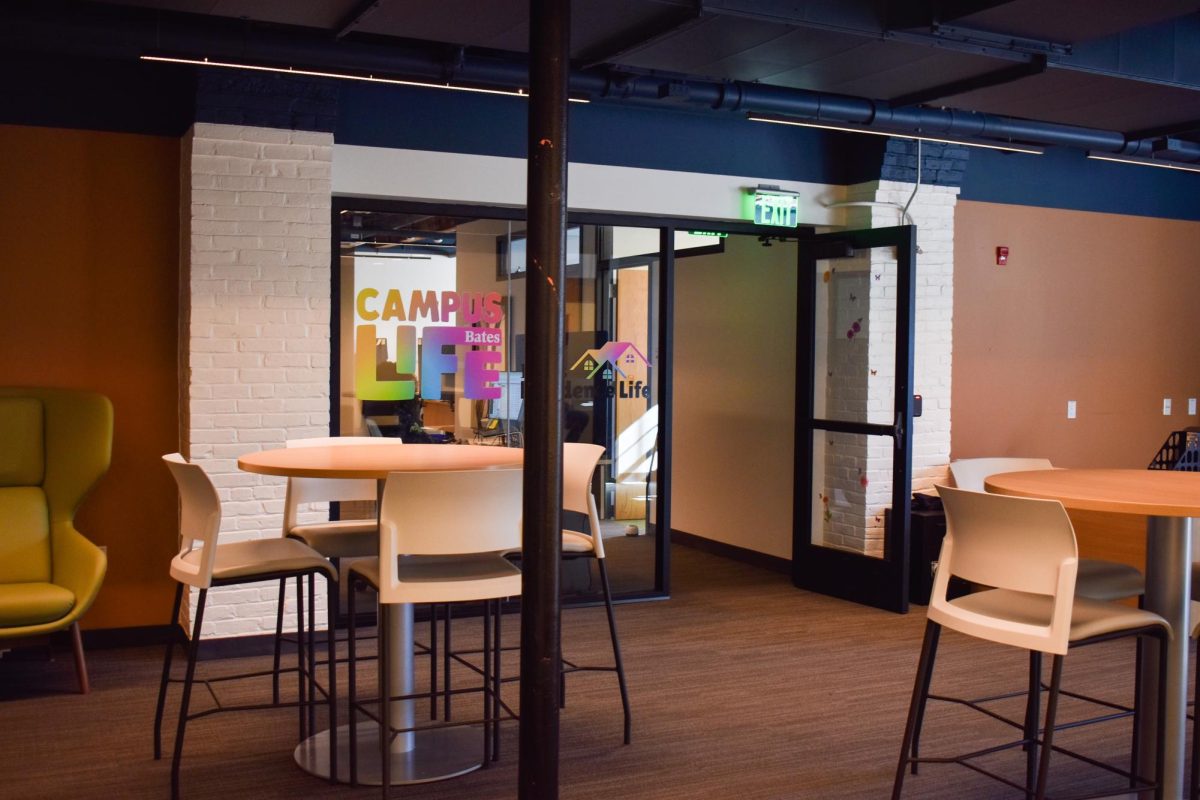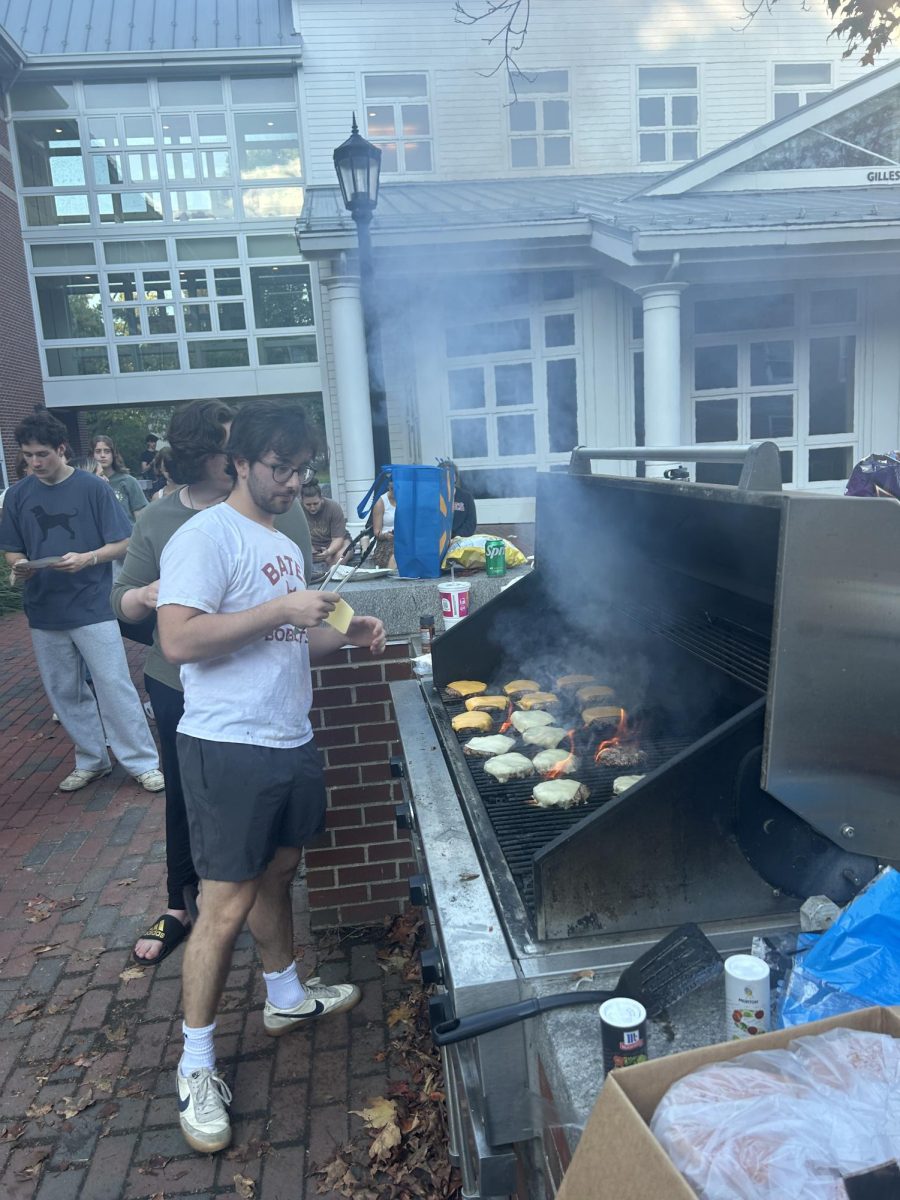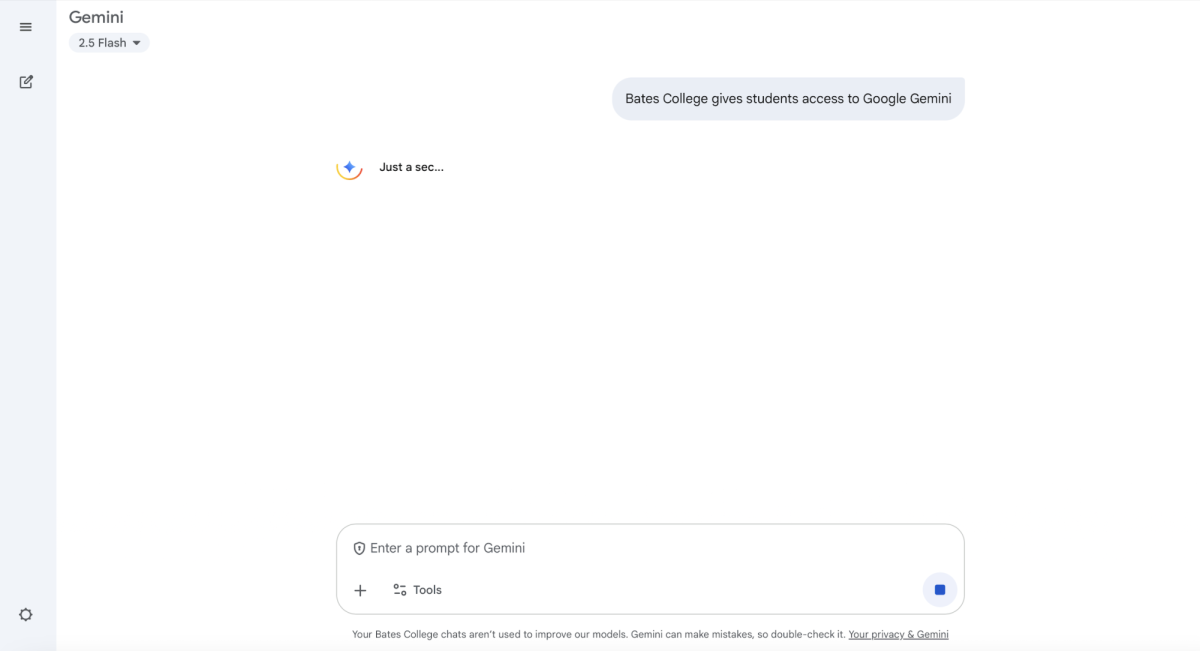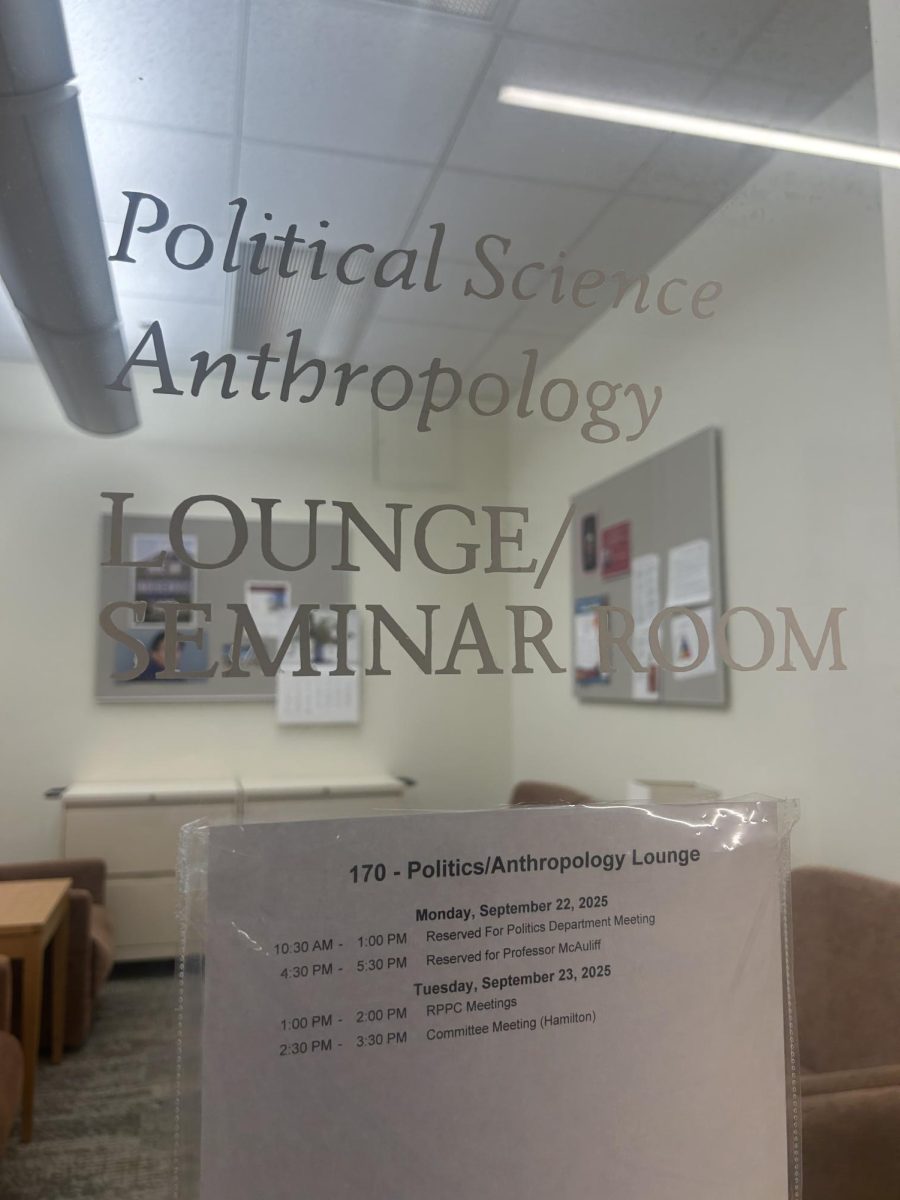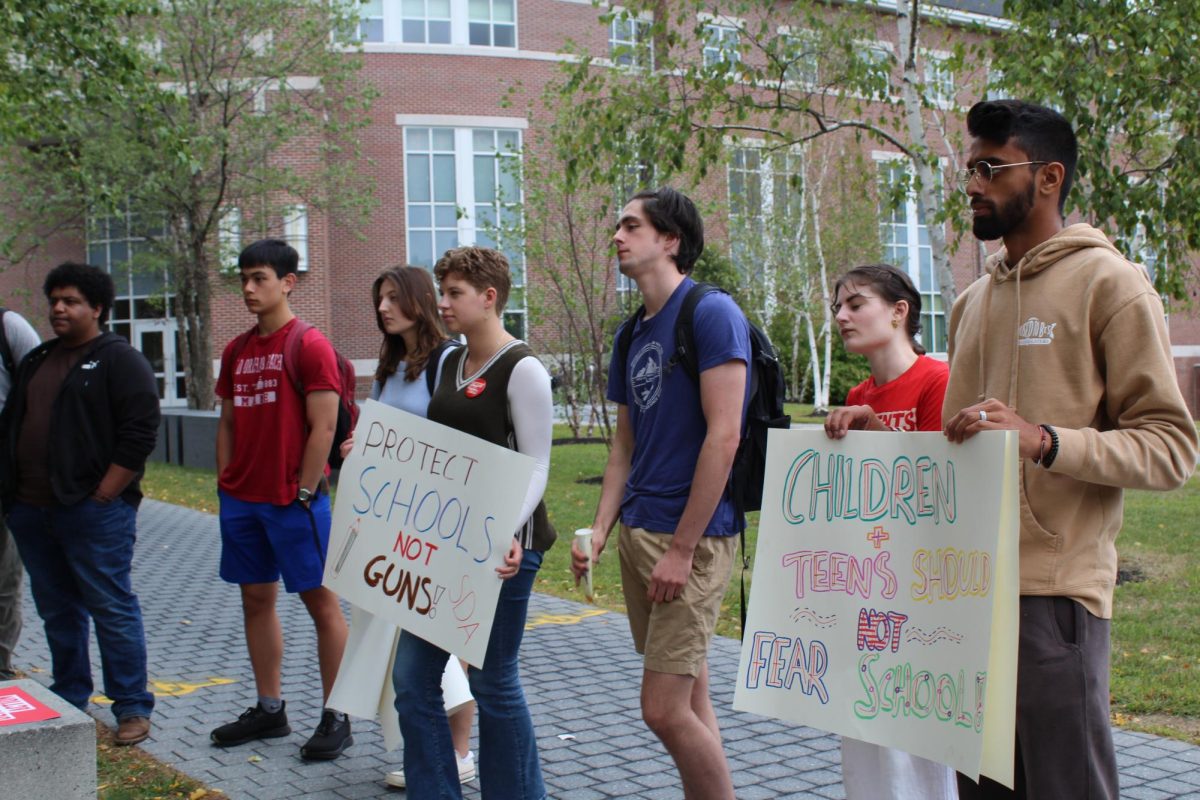The story of a house and the little-known historical connections between Germany, African Americans, and the Civil Rights movement.
A cozy room in Roger Williams hosts about 15 people as they mill about. Some are already seated, ready for Kristen Kopp’s lecture “The Rosa Parks House — at Home in Berlin,” and others visit the table of assorted desserts and drinks while they chat.
Associate Professor of German Professor Jakub Kazecki introduced Dr. Kristin Kopp, Associate Professor of German, Director of Graduate Studies in German and Faculty Affiliate in Black Studies at the University of Missouri. Her research centers around migrations, both German-speaking Central Europe’s colonial past and the long history of Africans and their descendants in Europe.
Collaborating with colleagues in the Black Central European Studies Network (BCESN), Dr. Kopp constructed a database of materials for educators including the “The History of Blacks in German” syllabus, which won a German studies award. On Feb.8, Dr. Kopp presented on the Rosa Parks House and its historical connections with Germany, African Americans, and the Civil Rights movement.
Her presentation began with the artist Ryan Mendoza and his work reconstructing the Turner family house from Detroit, now a work of art called ‘The White House’, in Rotterdam. Mendoza, an American expat living in Naples, primarily paints using old master techniques, bright colors, and contemporary subjects. He felt this particular work memorialized a part of America’s history by preserving a house that would otherwise be demolished, Dr. Kopp explained. The money raised in the piece’s auction was intended to be distributed to the impoverished area he had taken the house façade from. However, the project raised controversy among citizens, academics, and journalists over exploitation of the area. Many were concerned that artists depicting the decay of Detroit profited off of citizen’s suffering, instead of bringing awareness to pressing local issues. This story provided context for the Rosa Parks House, another rebuilding conducted by Mendoza.
Mendoza’s work with Rosa Park’s house began in Detroit with Rhea McCauley. One of Rosa Parks’ nieces, she had lived in the house with Rosa Parks and had been working for a decade to find a way to preserve the house. Despite reaching out to Detroit’s mayor and various institutions across the United States, no one was interested in the house or its significance to America’s history.
Using personal funding, Mendoza deconstructed and relocated Rosa Parks’ house, bringing it to Berlin. There, he restored it in his own backyard without external funding. While working on this project, he suffered from two strokes.

When the house opened in early April, there was incredible press coverage, but none evoked the outrage Mendoza had hoped for. Mendoza told The Guardian the house was “purposely kidnapped in order for America to recognize what it has lost.” Instead, many extolled Mendoza’s ‘heroism’ or the house’s connections to the Civil Rights Movement (and how that might inspire reflection on Germany’s own history with white supremacy). As an incredible monument to America’s history, Rosa Parks house’s absence from American soil was meant to invite examination of the United States’ relationship with its own history.
No one wanted to host the house long-term. While the Nash Family Foundation funded its return to the U.S. for an exhibition at the WaterFire Arts Center in Providence, Rhode Island, its residency there lasted only two days.
Brown University paid for the house’s stay in an installation at its Center for the Study of Slavery and Justice, but canceled the appearance as Mendoza was setting up. By then, there was also a long list of places that had declined interest in hosting: The Museum of Modern Art in New York, the Charles H. Wright Museum of African American History in Detroit, the Brooklyn Museum and the Smithsonian, among others.
Mendoza managed to organize an exhibition of the house in Naples with the Morra Greco Foundation, where he had once worked briefly, for two and a half months at the end of 2020. This drew some media attention, especially in the wake of the Black Lives Matter protests that summer. There have been no further public events involving the house and its location is currently unknown.
While the audience pondered this mystery, Dr. Kopp drew attention to the German context to the historical moment Rosa Parks’ house was meant to preserve. She explained that after World War II, American troops remained in Germany until 1955 to try to ‘democratize’ and reduce anti-Semitic bigotry in Germany. She indicated that many Germans pointed out that this was highly hypocritical, given that the troops themselves were segregated under Jim Crow law. As Black G.I.s were assigned less unfavorable jobs, including supply runs delivering chocolate and other sweets to Germans, they were often the first contact Germans had with America.

Dr. Kopp described how Germans treated Black G.I.s with the authority, dignity, and respect that was extremely rare at the time in the U.S… She continued, saying that this was so exceptional that certain US newspapers ran sections highlighting ‘normal’ interactions where Black Americans were treated as equals or superiors.
Dr. Kopp explained that not only did plenty of Black G.I.s ‘fraternize’ with white German women, but many were also able to bring their families over, enfranchising Black American women and children with similar benefits. This immense disparity of treatment meant that when troops were called back to ‘American soil’ to be discharged, many chose to stay in Germany. Considering prohibitive travel expenses at the time, this constituted cutting off communication from family back in the U.S.
Dr. Kopp drew a connection between Rosa Park’s arrest and the return of many Black G.I.s to the U.S. in 1955, explaining how the influence of G.I.s experience in Germany may have contributed to the vigor of the movement. Given these relationships, Dr. Kopp asked, where is the Rosa Parks House at home? Maybe it is at home in Detroit while also being at home in Berlin? Or maybe not.
“This is not a German history or an American history, this is a German-American history.”
– Dr. Kristin Kopp
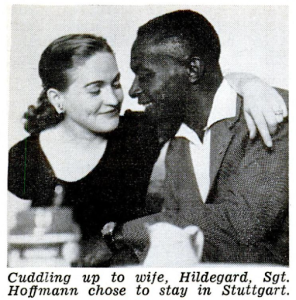
After the presentation, Dr. Kopp welcomed questions and comments from around the room. Responding to a question regarding the situation of Rosa Parks’ House within each country’s past, Dr. Kopp expressed how inextricable these histories are. “This is not a German history or an American history, this is a German-American history,” she said.
Dr. Kopp illuminated the importance of examining how we contextualize history and evaluate the present. She hoped that this conversation could raise awareness of the transnational nature of Civil Rights history through consideration of the influence of American experiences while stationed during the postwar occupation in West Germany. During Black History Month, the lecture elevated nuanced understandings of the Civil Rights movement, encouraging the audience to re-examine the perspectives with which they learn about American and Black History.



